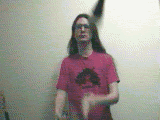-
Notifications
You must be signed in to change notification settings - Fork 0
Introduction
Libgdx is a cross-platform game and visualization development framework. It currently supports Windows, Linux, Mac OS X, Android, iOS and HTML5 as target platforms.
Libgdx allows you to write your code once and deploy it to multiple platforms without modification. Instead of waiting for your latest modifications to be deployed to your device or to be compiled to HTML5, you can benefit from an extremely fast iteration cycle by coding your application mainly in a desktop environment. You can use all the tools of the Java ecosystem to be as productive as you can be.
Libgdx lets you go as low-level as you want, giving you direct access to file systems, input devices, audio devices and OpenGL via a unified OpenGL ES 1.x and 2.0 interface.
On top of these low-level facilities we built a powerful set of APIs that help you with common game development tasks like rendering sprites & text, building user interfaces, playing back sound effects and music streams, linear algebra and trigonometry calculations, parsing JSON and XML, and so on.
Where necessary, libgdx leaves the realm of Java and resorts to native code to aim for the best possible performance. All of this functionality is hidden behind Java APIs so you don't have to worry about cross-compiling native code for all platforms. Many parts of libgdx work around known platform issues so you don't have to deal with them.
Libgdx aims to be a framework rather than an engine, acknowledging that there is no one-size-fits-all solution. Instead we give you powerful abstractions that let you chose how you want to write your game or application.
Libgdx ties in a lot of third party libraries to provide its functionality:
-
Developer's Guide
- Introduction
- Goals & Features
- Community & Support
- Contributing
- Games Built with Libgdx
- Prerequisites
- Project Setup, Running & Debugging
- Third Party Services
- Working from Source
- Using libgdx with other JVM languages
- The Application Framework
- A Simple Game
- File Handling
- Preferences
- Input Handling
- Memory Management
- Audio
-
Graphics
- Configuration & Querying Graphics ??
- Fullscreen & VSync
- Continuous & Non-Continuous Rendering
- Clearing the Screen
- OpenGL ES Support * Configuration & Querying OpenGL ?? * Direct Access ?? * Utility Classes * Rendering Shapes * Textures & TextureRegions * Meshes * Shaders * Frame Buffer Objects
- 2D Graphics * SpriteBatch, TextureRegions, and Sprite * Clipping, with the use of ScissorStack * Orthographic camera * Mapping Touch Coordinates ?? * NinePatches * Bitmap Fonts * Distance field fonts * Using TextureAtlases * Pixmaps * Packing Atlases Offline * Packing Atlases at Runtime * 2D Particle Effects * Tile Maps * scene2d * scene2d.ui * Skin
- 3D Graphics ?? * Quick Start * 3D animations and skinning * Importing Blender models in LibGDX * Perspective Camera ?? * Picking ??
- Managing Your Assets
- Utilities
-
Math Utilities
- Interpolation
- Vectors, Matrices, Quaternions
- Circles, Planes, Rays, etc.
- Bounding Volumes ??
- Intersection & Overlap Testing ??
- Physics
- Tools
- Extensions
- gdx-audio ??
- gdx-freetype
- Deploying your Application
- Building Libgdx ??
- Articles
- Deprecated (May be outdated)
- The Application Framework
- The Application Life-cycle ??
- Modules Overview
- File Module
- Graphics Module
- Asset Manager
- Tutorials
- Video Tutorials
- Beginner * Hello World * My First Triangle * Mesh, Color & Texture * Projection, Viewport, & Camera * Creating and texturing 3d models in Blender for Libgdx
- Intermediate * Actions
- Misc * AdMob in Libgdx * Integrating Libgdx and the Device camera * String Builder ??
- The Application Framework






